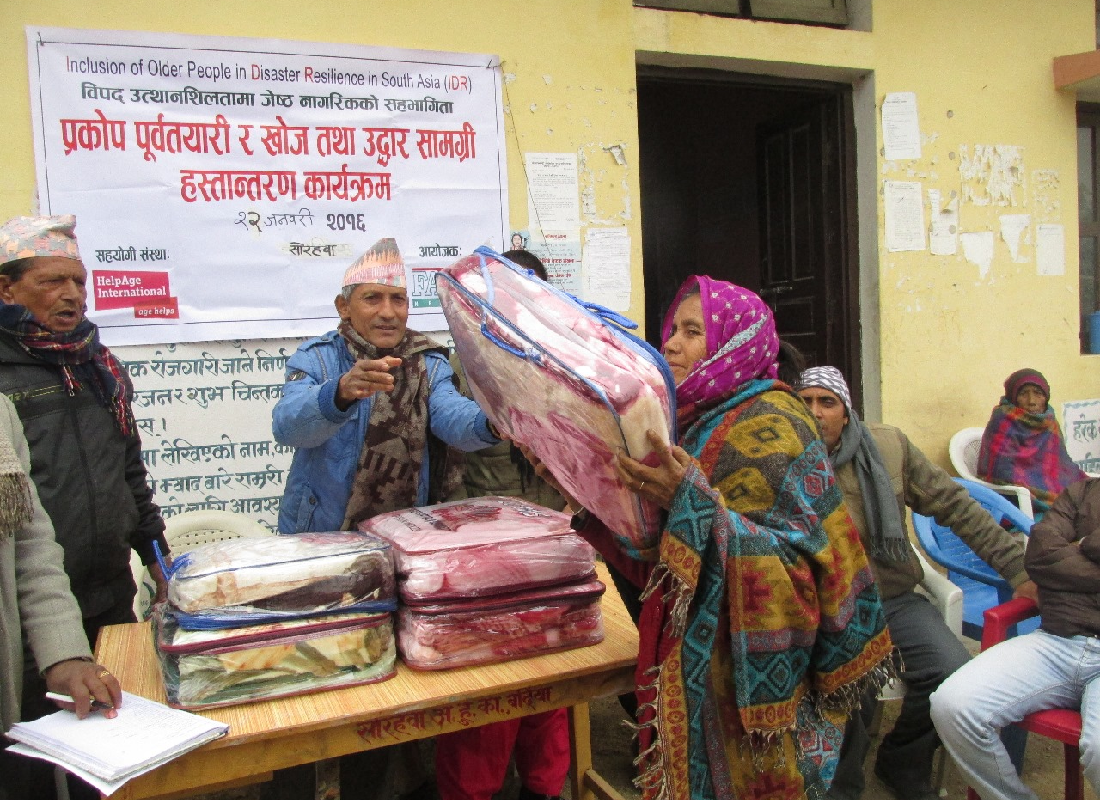Program Detail's
Inclusion of Older People in Disaster Resilience in South Asia. (IDR-1st)
Inclusion of Older People in Disaster Resilience in South Asia. (IDR-1st)

The Inclusion of Older People in Disaster Resilience in South Asia (IDR-1st) program was implemented in Kailali and Bardiya districts, covering the areas of Geta, Urma, Fulbari NDC, and Dhangadhi Municipality in Kailali, as well as Sorahawa, Mainapokhara, Mahamadpur, and Deudakala in Bardiya. This initiative focused on strengthening the capabilities of older people to ensure their meaningful participation in disaster-related policies, plans, and actions, recognizing their unique needs and contributions in disaster resilience efforts.
Objectives:
· Empower
Older People
· Enhance
the knowledge and skills of older people to actively participate in disaster
preparedness, response, and recovery.
· Promote
Inclusive Disaster Policies and Plans
· Advocate
for the inclusion of older people in local and regional disaster risk reduction
(DRR) frameworks.
· Ensure
that disaster policies and plans address the specific vulnerabilities and
strengths of older populations.
· Strengthening
Community Resilience
· Build
age-inclusive community disaster management structures.
· Foster intergenerational collaboration for holistic disaster resilience.
Key Components:
1. Capacity Building for Older
People
· Conducted training sessions on disaster preparedness, response mechanisms, and early
warning systems tailored to older people's needs.
· Provided
education on first aid, evacuation planning, and post-disaster recovery
strategies.
2. Inclusive Community Engagement
· Established
forums and platforms for older people to voice their concerns and contribute to
disaster planning processes.
· Promoted
intergenerational dialogue to integrate older people's perspectives into
community decision-making.
3. Advocacy and Policy
Integration
· Worked
with local governments to include older people’s needs in DRR policies and
municipal development plans.
· Developed
guidelines for creating age-inclusive disaster preparedness and response
strategies.
4. Resource Support and
Accessibility
· Ensured
access to disaster preparedness resources, including mobility aids,
communication tools, and emergency supplies tailored for older populations.
· Enhanced the physical and social infrastructure to meet the needs of older people during disasters.
Outcomes:
· Older
people were equipped with the skills and confidence to actively participate in
disaster resilience efforts.
· Their
contributions were recognized and valued within their communities.
· Local
disaster risk reduction frameworks incorporated the perspectives and needs of
older populations, ensuring a more equitable approach.
· Communities
benefited from the active participation of older people, leveraging their
wisdom and experience to improve disaster preparedness and response.
· Age-inclusive
disaster management structures were established, fostering collaboration across
all age groups.
· The program created a replicable model for integrating older people into disaster resilience efforts across South Asia.
Conclusion:
The Inclusion of Older People in
Disaster Resilience in South Asia (IDR-1st) program highlighted the critical
role older people play in disaster risk reduction and resilience-building. By
empowering them and ensuring their active involvement in disaster-related
policies and plans, the program not only addressed their unique vulnerabilities
but also harnessed their potential as key contributors to community resilience.
This inclusive approach set a precedent for promoting equity and collaboration
in disaster management efforts across South Asia.